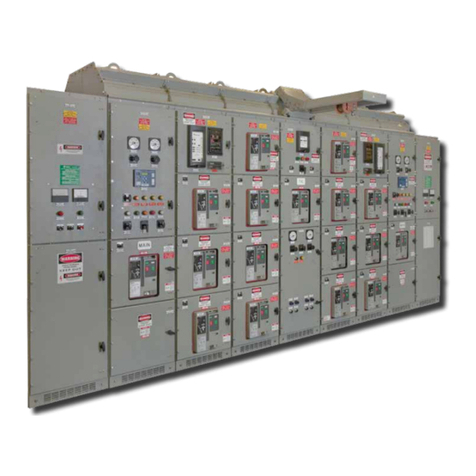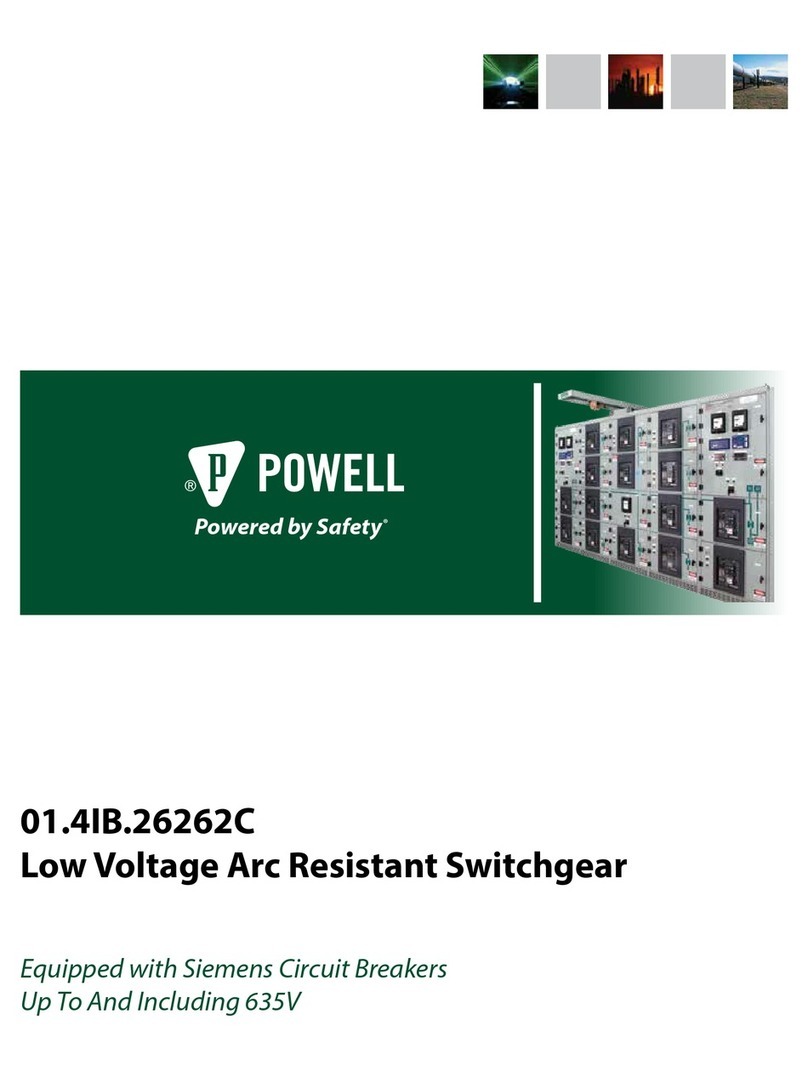
Powered by Safety®
4Safety
Auxiliary Switch Assembly SM-1100
c. Ge n e r A l
1. Only supervised and qualified personnel
trained in the usage, installation, operation,
and maintenance of the circuit breaker shall
be allowed to work on this equipment. It
is mandatory that this instruction bulletin,
any supplements, and service advisories be
studied, understood, and followed.
2. Maintenance programs must be consistent
with both customer experience and
manufacturer’s recommendations,
including service advisories and instruction
bulletin(s). A well planned and executed
routine maintenance program is essential
for circuit breaker’s reliability and safety.
3. Service conditions and circuit breaker
applications shall also be considered in the
developmentofsafetyprograms.Variables
include ambient temperature; humidity;
actual continuous current; thermal cycling;
number of operations; interrupting duty;
and any adverse local conditions including
excessive dust, ash, corrosive atmosphere,
vermin and insect infestations.
d. Sp e c i f i c
1. DO NOT WORK ON AN ENERGIZED
CIRCUIT BREAKER. If work must be
performed on a circuit breaker, remove it
from service and remove it from the
metal-clad switchgear.
2. DO NOT WORK ON A CIRCUIT BREAKER
WITH THE CONTROL CIRCUIT ENERGIZED.
3. EXTREME CARE MUST BE EXERCISED
TO KEEP ALL PERSONNEL, TOOLS, AND
OTHER OBJECTS CLEAR OF MECHANISMS
WHICH ARE TO BE OPERATED,
DISCHARGED, OR RELEASED. These
circuit breakers utilize stored energy
mechanisms. These mechanisms must be
serviced only by skilled and knowledgeable
personnel capable of releasing each spring
loadinacontrolledmanner.Detailed
information regarding these mechanisms is
found in this instruction bulletin.
4. DO NOT ATTEMPT TO CLOSE THE CIRCUIT
BREAKER MANUALLY ON AN ENERGIZED
CIRCUIT.
5. DO NOT USE AN OPEN CIRCUIT BREAKER
AS THE SOLE MEANS OF ISOLATING A
HIGH VOLTAGE CIRCUIT. For complete
isolation, the circuit breaker shall be in
the disconnected position or shall be
withdrawn completely.
6. ALL COMPONENTS SHALL BE
DISCONNECTED BY MEANS OF A VISIBLE
BREAK AND SECURELY GROUNDED FOR
SAFETY OF PERSONNEL PERFORMING
MAINTENANCE OPERATIONS ON THE
CIRCUIT BREAKERS.
7. Interlocks are provided to ensure the
proper operating sequences of the circuit
breakers and for the safety of the user. If for
any reason an interlock does not function
as described, do not make any adjustments,
modification, or deform the parts. DO
NOT FORCE THE PARTS INTO POSITION.
CONTACT POWELL FOR INSTRUCTIONS.






























